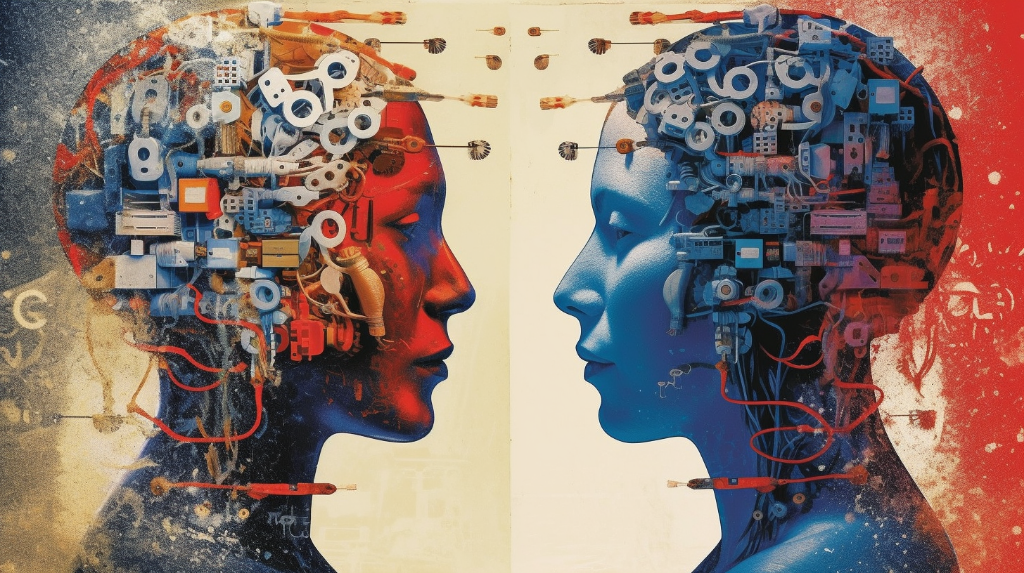As we find ourselves amidst the technological revolution, two terms you’ve likely heard are Machine Learning and Deep Learning. But what do they actually mean? In the simplest terms, machine learning is a method of data analysis that automates analytical model building. It’s a branch of artificial intelligence based on the idea that systems can learn from data, identify patterns, and make decisions with minimal human intervention. On the other hand, deep learning is a subset of machine learning that’s based on artificial neural networks with representation learning. In deep learning, a computer model learns to perform classification tasks directly from images, text, or sound.
Both machine learning and deep learning are subsets of artificial intelligence (AI), and while they are interconnected, they have key differences. Understanding these differences is crucial, especially for anyone seeking a job in tech. In this rapidly evolving field, knowledge of these concepts can be a significant advantage. Let’s dive in.

Understanding Machine Learning
Machine learning is a method of AI that allows a system to learn from data without being explicitly programmed. The process begins with feeding good quality, relevant data into the system and then using algorithms to train the model on this data. Through this training, the model learns and evolves, improving its decision-making capabilities over time.
Think about how Netflix recommends movies to you based on the ones you’ve watched before. This is machine learning in action. Other practical applications of machine learning include fraud detection, predicting customer behavior, and even diagnosing diseases.
Delving into Deep Learning
Deep learning, as mentioned before, is a subset of machine learning. It’s called “deep” learning because it makes use of deep neural networks. These networks attempt to simulate the behavior of the human brain—albeit far from matching its ability—to ‘learn’ from large amounts of data.
While a neural network with a single layer can still make approximate predictions, additional hidden layers can help optimize the results. This is where deep learning steps in. It uses a lot of data and the computational power of the machine to process and match the inputs to the labels.
Deep learning is responsible for some of the most advanced AI applications, like self-driving cars, voice-controlled assistants like Siri and Alexa, and image recognition systems. It’s safe to say that deep learning is paving the way for machines to work and respond like humans.
Key Differences Between Machine Learning and Deep Learning
While both machine learning and deep learning are branches of artificial intelligence, they differ in many ways. These differences range from the way they handle data to their hardware requirements. Understanding these differences can be crucial in deciding which one to implement in a project or focus on in your career. Shall we explore these differences?
Data Dependency
One of the primary differences between machine learning and deep learning is their dependency on data. Machine learning algorithms typically perform well with smaller, carefully curated datasets. They can help us find patterns and make predictions based on these smaller datasets.
On the other hand, deep learning algorithms thrive on large amounts of data. The more data you can feed them, the better their performance. This is because deep learning models are designed to learn by themselves, identifying features and making decisions based on the patterns they discover in the data. But how does this impact their interpretability?
Interpretability
Interpretability refers to the transparency of the decisions made by an algorithm. Machine learning models are generally more interpretable than deep learning models. This means that it’s usually easier to understand why a machine learning model made a certain prediction or decision.
Deep learning models, however, are often referred to as “black boxes.” Their decision-making process is much more complex and harder to understand, even for experts. This lack of transparency can be a challenge, especially in industries where explanations are crucial. But what about their hardware requirements?
Hardware Requirements
Machine learning and deep learning also differ significantly in their hardware requirements. Machine learning algorithms can typically run on lower-end hardware, making them more accessible for smaller projects or companies with limited resources.
In contrast, deep learning algorithms usually require more powerful and specialized hardware. This is due to the complex computations and large amounts of data they handle. Graphics Processing Units (GPUs) are often used for deep learning because they can perform many calculations simultaneously, speeding up the learning process.
So, the choice between machine learning and deep learning may depend on the data you have, the interpretability you need, and the hardware resources you have available. But how does this information help you in your tech journey? Let’s move on to the pros and cons of each to get a clearer picture.
Machine Learning: Pros and Cons
Machine learning, as a subset of artificial intelligence, has a number of strengths that make it highly advantageous in many scenarios. But like any technology, it also comes with its own set of challenges. Let’s take a closer look.
Pros of Machine Learning
One of the most significant advantages of machine learning is its ability to handle large volumes of data. With the right algorithms and models, machine learning can analyze and make sense of massive datasets that would be virtually impossible for humans to process manually.
Moreover, machine learning can improve over time. The more data it processes, the more accurate and efficient it becomes. This aspect of continuous learning and adaptation is what makes machine learning particularly powerful.
Another benefit is its versatility. Machine learning can be applied across a wide range of fields and industries, from healthcare and finance to marketing and transportation.
Cons of Machine Learning
Despite its many benefits, machine learning also has some downsides. One of the biggest challenges is the quality and quantity of data required. Machine learning models are only as good as the data they’re trained on. If the data is incomplete, biased, or inaccurate, the output will be too.
Another issue is the complexity and time required to train machine learning models. Depending on the size and complexity of the dataset, this process can be quite time-consuming and resource-intensive.
Finally, there’s the issue of interpretability. Machine learning models, particularly complex ones, can be difficult to understand and explain. This lack of transparency can be a significant barrier in some settings, especially those that require accountability and explainability.
Deep Learning: Pros and Cons
Deep learning, a more advanced subset of machine learning, also comes with its own set of pros and cons. Let’s explore them.
Pros of Deep Learning
Deep learning’s primary strength lies in its ability to process and model complex, unstructured data. This makes it particularly effective for tasks like image and speech recognition, natural language processing, and more.
Another advantage of deep learning is its capacity for self-learning. Unlike traditional machine learning models that require explicit programming and feature extraction, deep learning models learn features directly from the data, making them more efficient and accurate.
Cons of Deep Learning
On the flip side, deep learning models require a significant amount of data and computational power. This can make them expensive and impractical for smaller projects or organizations with limited resources.
Deep learning models can also be quite complex and difficult to interpret. This lack of transparency, often referred to as the “black box” problem, can make it challenging to understand and explain how these models arrive at their predictions.
Finally, training deep learning models can be time-consuming. Depending on the complexity of the model and the size of the dataset, it can take days, weeks, or even months to train a deep learning model.

Choosing Between Machine Learning and Deep Learning
So, when should you choose machine learning over deep learning, or vice versa? The answer to this is not as straightforward as it may seem. It largely depends on various factors such as the nature of the problem you are trying to solve, the volume and quality of the available data, and the computational resources at your disposal. Let’s break it down.
Machine learning is often suitable for projects with small to medium-sized datasets and when interpretability is crucial. It is also a good choice when the computational resources are limited. Have you noticed how some tech startups begin their journey with machine learning algorithms before transitioning to deep learning? That’s because machine learning models can provide good results with less computational power and data.
On the other hand, deep learning shines with large datasets and when the task is complex, such as image recognition, speech recognition, or natural language processing. However, keep in mind that deep learning requires more computational power and can be a black box, making it hard to interpret why a certain decision was made by the model.
The Future of Machine Learning and Deep Learning
What does the future hold for machine learning and deep learning? While it’s impossible to predict the future with absolute certainty, one thing is sure: the importance of both machine learning and deep learning in the tech industry is only set to increase. The growing reliance on data-driven decision making in businesses across industries means that there will be a continuing demand for professionals skilled in these domains.
Moreover, advancements in technology, such as the growth of quantum computing and the increasing availability of big data, are likely to drive further innovation in both machine learning and deep learning. This could potentially open up new applications and opportunities in the tech industry, making it an exciting field to be a part of. Are you ready to be a part of this journey?
Practical Takeaways
Hopefully, this blog post has provided you with a clearer understanding of machine learning and deep learning. Remember, while both are subsets of artificial intelligence, they have distinct differences and are suited for different types of projects.
When choosing between machine learning and deep learning, consider the nature of the problem, the availability of data, and the computational resources. Machine learning is often a good starting point for small to medium-sized projects, while deep learning is more suited for complex tasks that require large amounts of data.
As we look to the future, the importance of understanding these concepts and gaining skills in these areas is only set to grow. Whether you’re already working in the tech field or considering a career switch, a solid understanding of machine learning and deep learning can provide a competitive edge. So, are you ready to leverage these tools for your next tech job or project?
